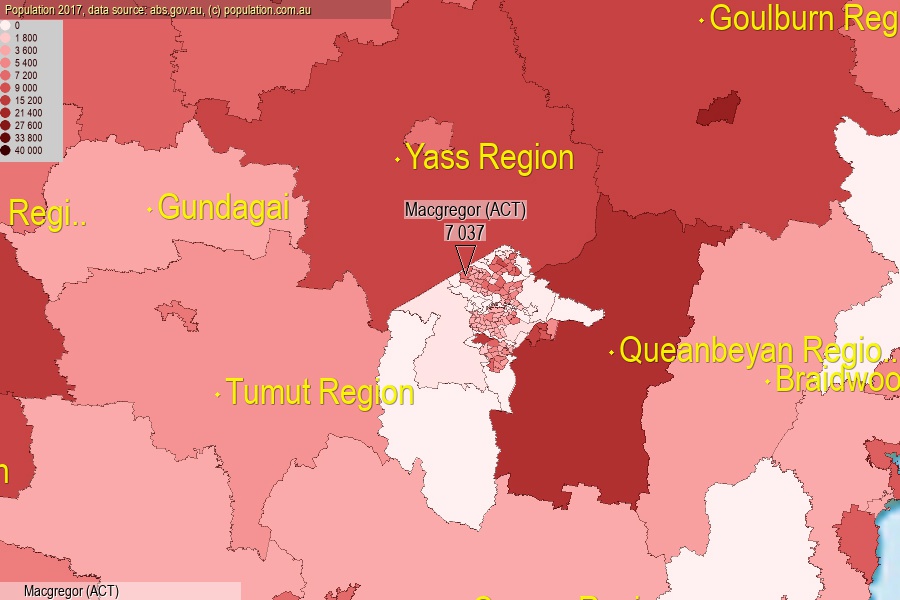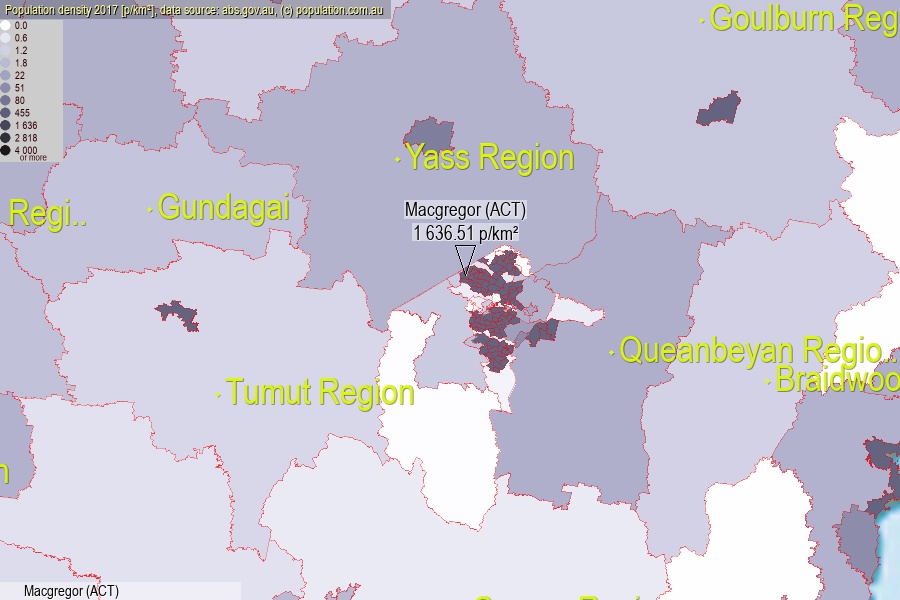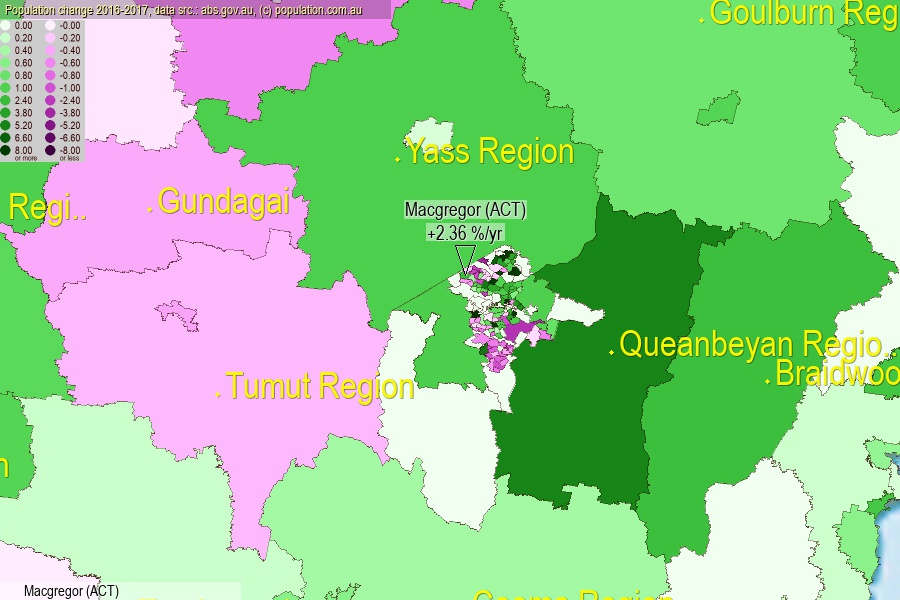 population.com.au
population.com.auLast official estimated population of Macgregor (ACT) (as Statistical Area Level 2) was 7 037 people (on 2017-06-30)[2]. This was 0.03% of total Australian population and 1.679% of ACT population. Area of Macgregor (ACT) is 4.30 km², in this year population density was 1 636.51 p/km² . If population growth rate would be same as in period 2016-2017 (+2.36%/yr), Macgregor (ACT) population in 2025 would be 8 478. [0]



Click to enlarge. Macgregor (ACT) is located in the center of the images.
Population [people], population density [p./km²] and population change [%/year] [2]
View borders » (new window) [4]
[1991-1992] -2.17 %/Yr.
[1992-1993] -2.74 %/Yr.
[1993-1994] -2.33 %/Yr.
[1994-1995] -2.62 %/Yr.
[1995-1996] -1.31 %/Yr.
[1996-1997] -1.15 %/Yr.
[1997-1998] -0.99 %/Yr.
[1998-1999] -0.72 %/Yr.
[1999-2000] -0.26 %/Yr.
[2000-2001] -0.72 %/Yr.
[2001-2002] -0.42 %/Yr.
[2002-2003] -1.41 %/Yr.
[2003-2004] -2.23 %/Yr.
[2004-2005] -2.01 %/Yr.
[2005-2006] -1.08 %/Yr.
[2006-2007] +6.27 %/Yr.
[2007-2008] +6.58 %/Yr.
[2008-2009] +11.17 %/Yr.
[2009-2010] +18.76 %/Yr.
[2010-2011] +5.56 %/Yr.
[2011-2012] +6.35 %/Yr.
[2012-2013] +5.57 %/Yr.
[2013-2014] +3.11 %/Yr.
[2014-2015] +2.62 %/Yr.
[2015-2016] +2.60 %/Yr.
[2016-2017] +2.36 %/Yr.
[0] Calculated with linear interpolation from officially estimated population
[1] Read more about SA2 and Australian Statistical Geography Standard (ASGS) on abs.gov.au
[2] Population data from Australian Bureau of Statistics (Population and density: 2017; change: 2016-2017)
[3] Digital Boundaries: Australian Statistical Geography Standard (ASGS) 2016.
[4] Border coordinates are simplifyed using Ramer-Douglas-Peucker algorithm.